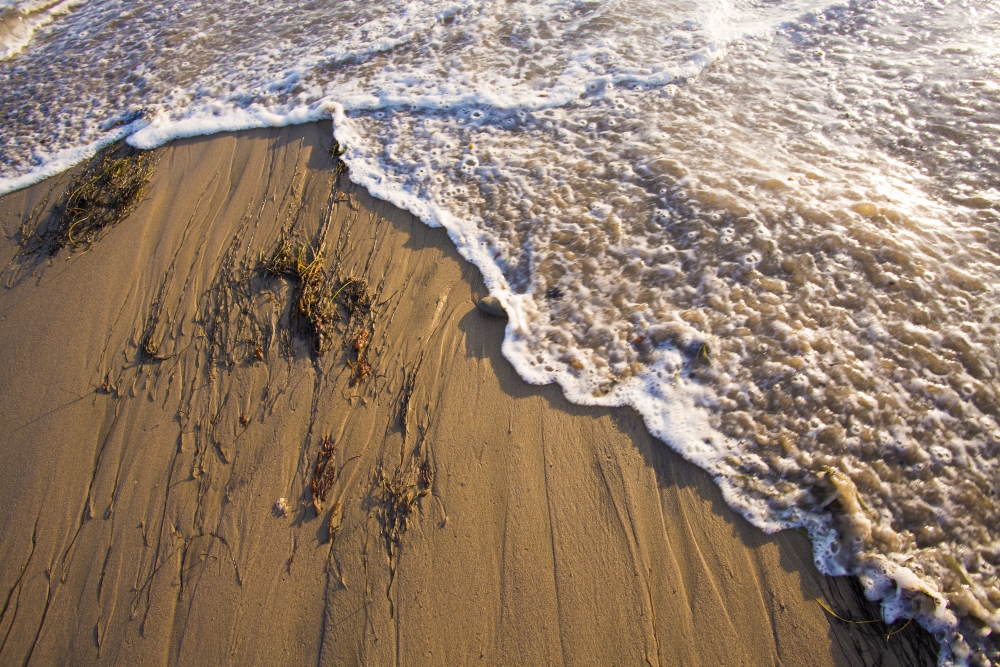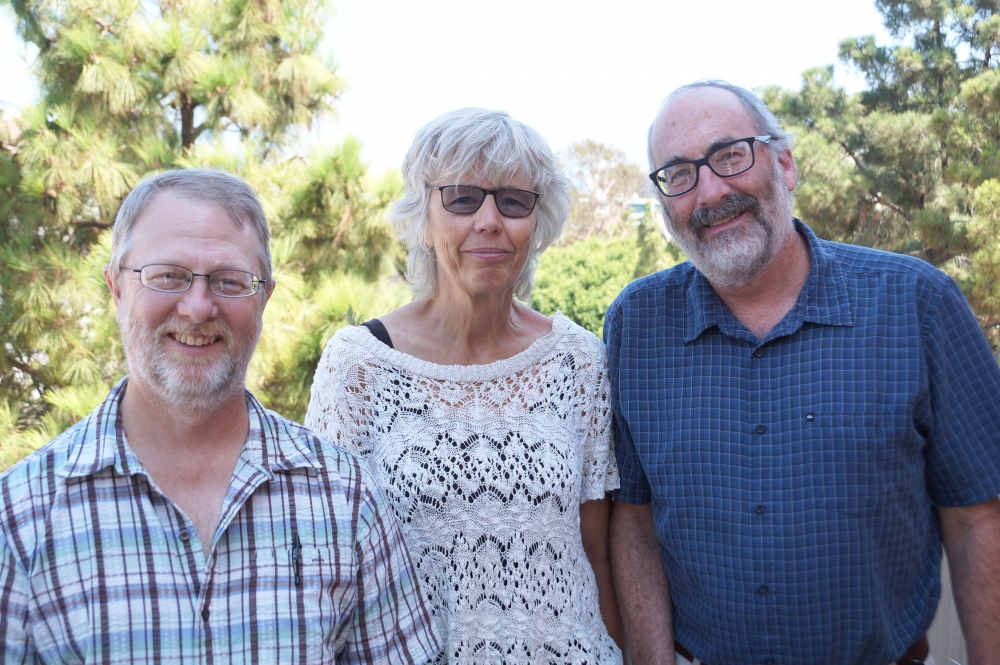
Life, Death and Carbon

Seven years in the making, an ambitious, international and multidisciplinary endeavor to better understand the movement of carbon in the ocean is preparing to deploy in August.
The mission, supported by NASA and the National Science Foundation: to observe and measure various ocean processes at different levels to get a clearer picture of how carbon is transported, sequestered and cycled back into the atmosphere. The data would not only lead to a better fundamental grasp of the ocean’s complex carbon cycle, but also provide data for better models and algorithms to be used in climate and environmental research.
“The ocean’s carbon cycle is a food web; you’ve got to care about everything,” UC Santa Barbara oceanographer David Siegel, the science lead for NASA’s Export Processes in the Ocean from RemoTe Sensing (EXPORTS) campaign, said in describing the challenge of understanding how the ocean — the Earth’s largest carbon sink — takes up carbon. Not only are the organisms involved very short-lived, he explained, the entire system is highly mobile, with variable characteristics.
EXPORTS is a project that evolved over the last seven years from planning document to full-fledged oceanographic endeavor involving two research vessels — the R/V Roger Revelle and R/V Sally Ride — state-of-the art collection and sensing equipment (including satellite imagery) and more than 100 scientists and crew.
“Oh, and there are robots, too,” Siegel added.
The research vessels, operated by Scripps Institution of Oceanography at UC San Diego, will begin their mission by sailing into the northeastern Pacific Ocean, where they will study the biological, physical and chemical processes that move carbon through the ocean.
One major subject of study will be phytoplankton — tiny, plant-like organisms that live in the sunlit upper ocean. These organisms play an important role in removing atmospheric carbon dioxide by using sunlight and dissolved carbon dioxide to grow. And, when they die or are eaten, their remains sink, exporting their carbon-laden remains and those of their animal-like predator zooplankton into the deeper layers of the ocean. The sinking of individual phytoplankton cells is a slow process that in principle takes months to reach the ocean’s interior; yet this export of carbon can take a few days if the cells aggregate into larger clumps known as “marine snow.”
“The impact the EXPORTS data will have for understanding how our planet is changing will be significant,” Siegel said. “NASA’s ocean color satellite record shows us these ecosystems are highly sensitive to climate variability. Changes in phytoplankton population affect the marine food web since phytoplankton are eaten by many animal species, big and small.”
But phytoplankton are only one part of the ocean’s carbon sequestration process, called the “biological pump.” Another part of the biological pump involves the daily vertical migration of zooplankton from the sunless depths — the “twilight zone” — to the surface at night to feed on phytoplankton. And a third involves the physical processes, including the large-scale circulation of the oceans, and smaller-scale turbulences that inject particles and dissolved carbon to the depths where their carbon is used by a vast community of microbes.
“We’ve designed EXPORTS to observe simultaneously the three basic mechanisms by which carbon is exported from the upper ocean to depth,” Siegel said. “We’re trying to better understand the biology and ecology of phytoplankton in the surface water, how those characteristics drive the transport of carbon to the twilight zone, and then what happens to carbon in the deeper water.”
Several other UCSB scientists will take part in this international endeavor. Research oceanographer Uta Passow’s work will focus on marine snow, while optical oceanographer Norman Nelson will take the role of lead scientist on one of the vessels, while also measuring ocean optical properties of the upper ocean. Microbial oceanographer Craig Carlson will lead analysis of dissolved organic matter (DOM) cycling and its relationship to microbial uptake, while fellow oceanographer Alyson Santoro will study particle respiration and microbial processes in the twilight zone. Meanwhile, biological oceanographer Mark Brzezinski will study diatoms — a phytoplankton group that is extremely important component of the sinking carbon flux.
EXPORTS is the first coordinated multidisciplinary science campaign of its kind to study the fates and carbon cycle impacts of microscopic plankton using two research vessels and an array of underwater robotic platforms that will sample the ocean autonomously.
“By employing two ships, we’ll be able to observe complex oceanographic processes that vary both in space and time that we wouldn’t be able to capture with a single ship,” said Paula Bontempi, a program manager for ocean biology and biogeochemistry at NASA headquarters.
Among the many technologies being used is an autonomous platform called a “Wirewalker” that uses wave energy to move instruments along a taut wire from the surface to 1,600 feet (500 meters) in depth while measuring temperature, salinity, oxygen, carbon and chlorophyll concentration.
A 6.5-foot (2-meter) long remote-controlled underwater vehicle called the Seaglider will gather similar measurements, but at depths as much as 3,200 feet (1,000 meters). On board the ship, samples will be collected for genomic sequencers to assess the composition of the phytoplankton, zooplankton, bacterial and archaeal communities. New microscopic imaging tools also will be used by EXPORTS scientists, including a high throughput microscope called the Imaging FlowCytobot that will provide real-time, high-resolution images of billions of individual phytoplankton. The Underwater Vision Profiler will measure the sizes of sinking aggregate particles and collect images of zooplankton organisms.
Mounted on the ship’s superstructure will be optical instruments that will measure the ocean’s color at very high spectral resolution, from the ultraviolet wavelengths to the shortwave infrared bands of the electromagnetic spectrum. Phytoplankton have distinct spectral “signatures” — colors of light they absorb and scatter. By identifying those signatures scientists will be able to develop algorithms for future satellite ocean color missions such as NASA’s Plankton, Aerosol, Cloud, ocean Ecosystem (PACE) mission. From space, PACE will use similar optical instruments to distinguish the type and amount of phytoplankton present in the ocean.
“What we will learn from EXPORTS will give us a deeper understanding of how plankton species and other microorganisms such as bacteria interact with their environment,” said Bontempi. “Not only will we be able to use this information to develop new approaches to identifying and quantifying plankton species from space, we’ll be able to predict how much carbon will cycle back into the atmosphere and how much will be transported to the ocean depths for the long term.”
This information will be important — perhaps even vital — as the Earth seeks to find equilibrium in response to the increasing amount of greenhouse gases.
“The carbon humans are putting into the atmosphere is warming Earth,” said Mike Sieracki, a program director in the National Science Foundation’s Division of Ocean Sciences. “Much of that carbon eventually finds its way into the ocean and is transported to the deep ocean, where it is sequestered and will not return to the atmosphere for a long time. This project will help us understand the biological and chemical processes that remove the carbon, and establish a foundation for monitoring these processes as the climate changes.”



